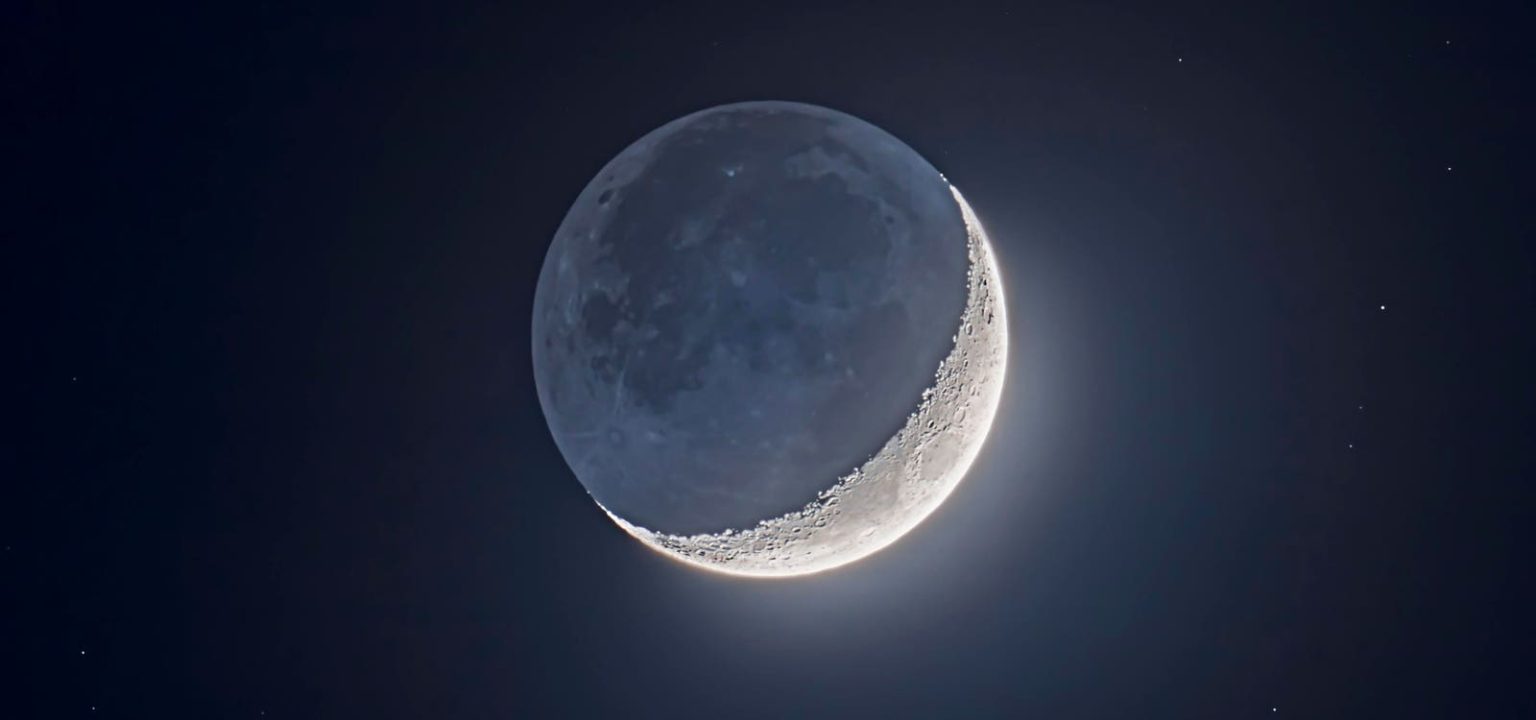There are few more delicate and beautiful sights in nature than the crescent moon, which dominates this week’s post-sunset sky.
During the week, each evening from Tuesday to the weekend, the moon will wax from the slimmest crescent to a much bigger, brighter crescent. Perhaps the most charming sight of this week will be “Da Vinci glow.”
‘Da Vinci Glow’ Explained
The dim light visible on the dark limb of a crescent moon, “Da Vinci glow” is named after the 16th century Italian astronomer leonardo Da Vinci, who first observed it. It’s also called “Earthshine” and “planet-shine” because it originates not in the moon but Earth. “Ashen glow” is another name for the sight. It is sunlight is reflected by Earth’s clouds and ice onto the moon, creating a faint glow. The phenomenon is only visible when a slim crescent moon is observed, something that can be seen each night this week. It varies in strength throughout the year as clouds and ice vary, according to NASA.
When And Where To See ‘Da Vinci Glow’
For sky-watchers, this week is all about moon viewing.
A new moon on Monday, November 13 presents a chance on Tuesday, November 14 to see the moon as a super-slender 2%-lit crescent in the southwestern sky a few minutes after sunset. You’ll need binoculars (be careful not to use them before the sun has completely disappeared from the sky), a shallow horizon and impeccable timing to see that.
More realistically, here’s when to much more easily see the crescent moon and “Da Vinci glow” as the crescent rises slightly higher into the post-sunset sky each night. Look southwest.
- Wednesday, November 15: 7%-lit waxing crescent moon (in a twilight sky)
- Thursday, November 16: 14%-lit waxing crescent moon and “Da Vinci glow” (in a twilight sky against the stars of Sagittarius)
- Friday, November 17: 23%-lit waxing crescent moon and “Da Vinci glow” (in a twilight sky against the stars of Sagittarius)
The best nights to see “Da Vinci glow” will be Thursday and Friday, 30-60 minutes after sunset. Technically speaking, it’s always there, but it becomes impossible to see after the crescent moon is about 25%-lit as the extra moonlight overwhelms the subtle light.
How To See ‘Da Vinci Glow’
Just your naked eyes are enough to make out “Da Vinci glow,” particularly on Thursday and Friday when it looks its best. However, if you have a pair of binoculars, then it’s worth putting them on the moon. You’ll see shadows thrown across the moon’s craters and mountains close to the line between light and dark.
However, put your binoculars on the dark limb of the moon, and you’ll see—258,000 miles away—the surface of the moon revealed by light coming from Earth’s ice sheets and clouds.
Wishing you clear skies and wide eyes.
Read the full article here





